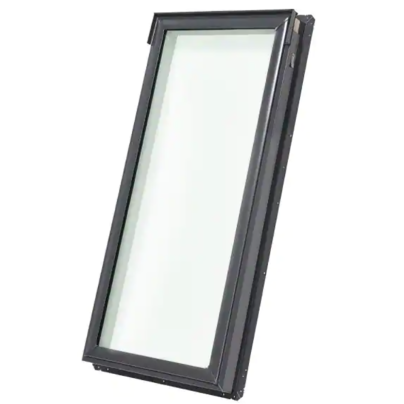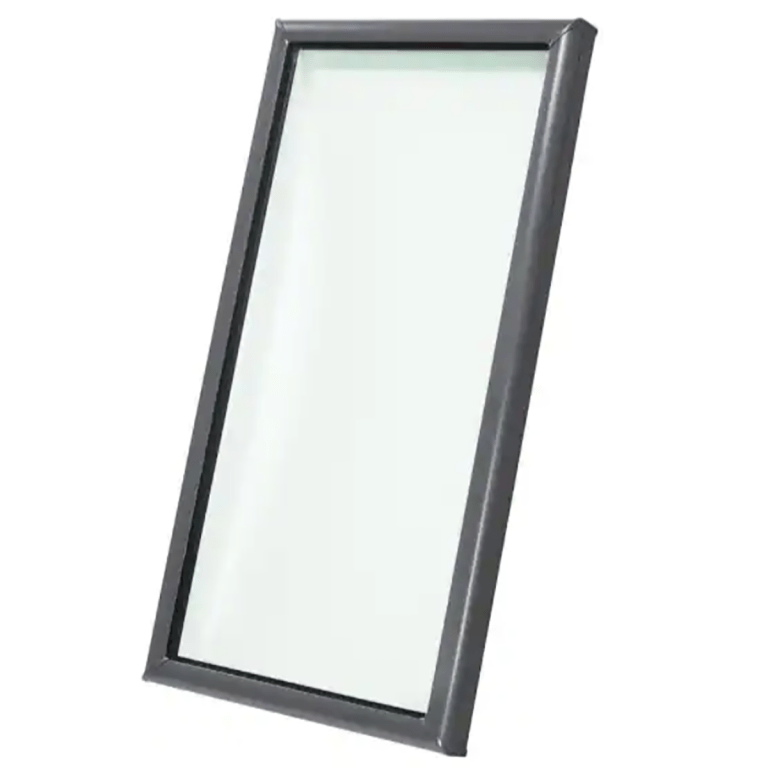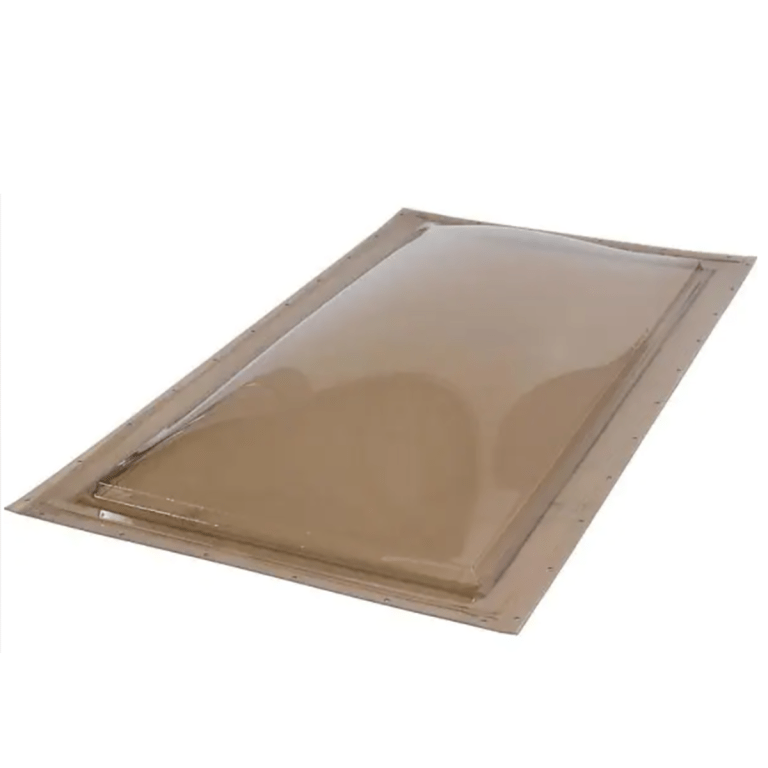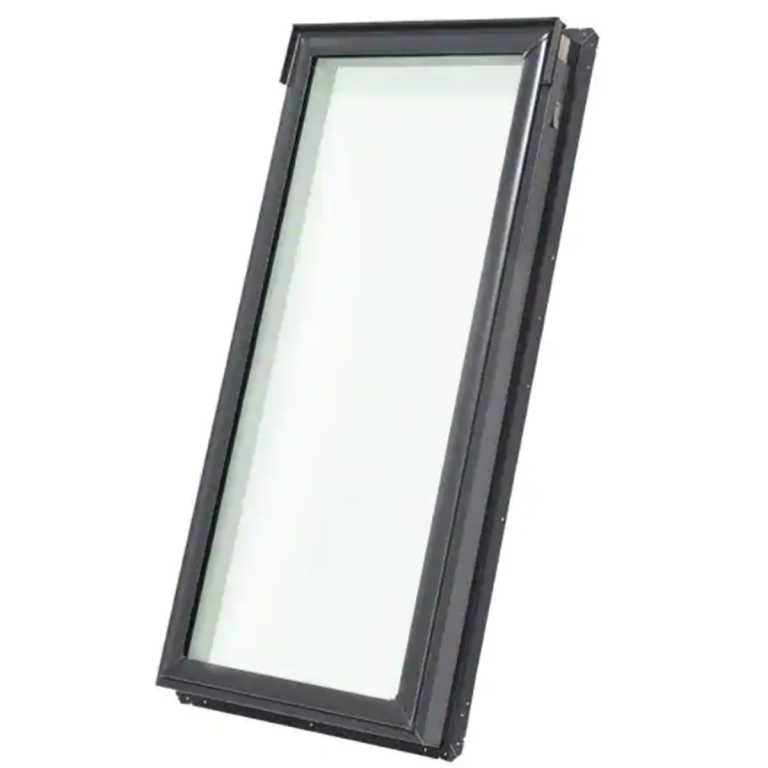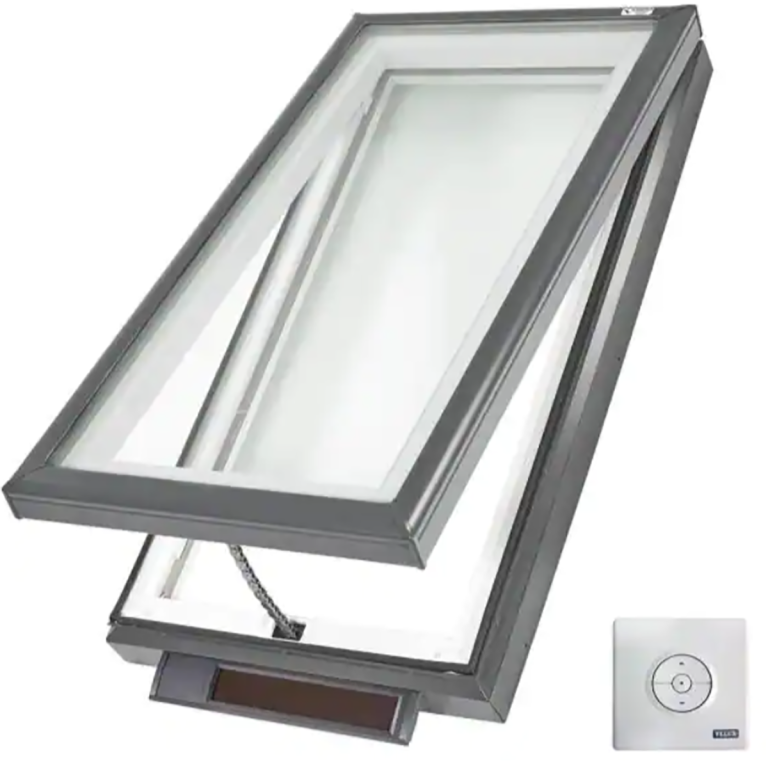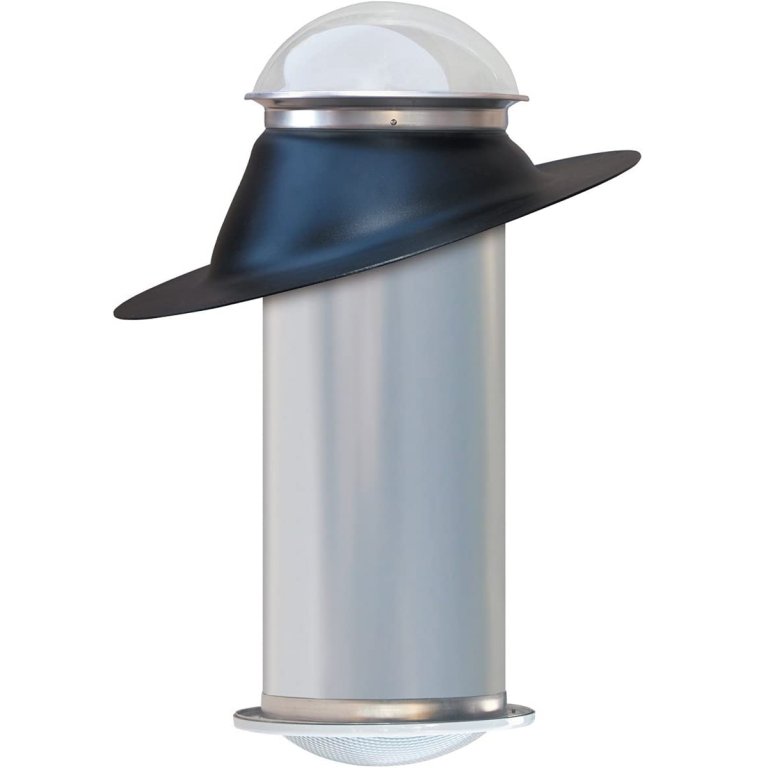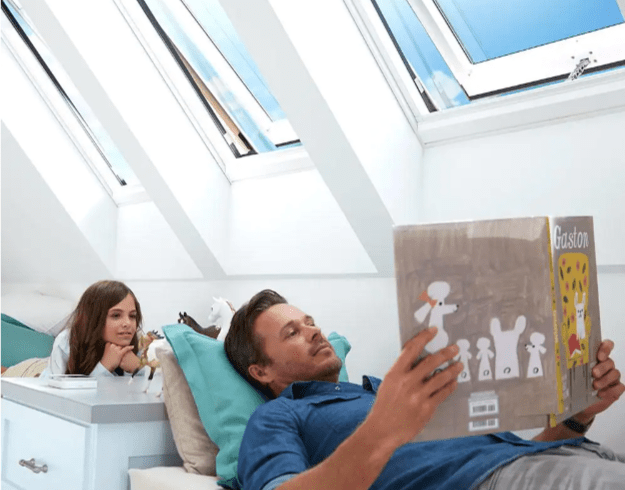
We may earn revenue from the products available on this page and participate in affiliate programs. Learn More ›
Skylights not only make a space brighter by letting in natural sunlight but also help lower energy bills by reducing the amount spent on heating and lighting.
Buying a skylight online, however, can feel a bit overwhelming because so many options are available at a wide range of prices. This article breaks down the types and features to look for when shopping for the best skylights and discusses the key considerations to keep in mind while evaluating products. Use this guide for tips on choosing the ideal option, and explore our curated picks for some of the best skylights for your home.
- BEST OVERALL: Velux Fixed Curb-Mounted Skylight
- BEST BANG FOR THE BUCK: Sun-Tek Fixed Self-Flashing Polycarbonate Skylight
- BEST DECK MOUNT: Velux Fixed Deck-Mounted Skylight
- BEST VENTILATED: Velux Solar-Powered Fresh Air Curb-Mounted Skylight
- BEST TUBULAR: Natural Light Energy Systems 10″ Tubular Skylight
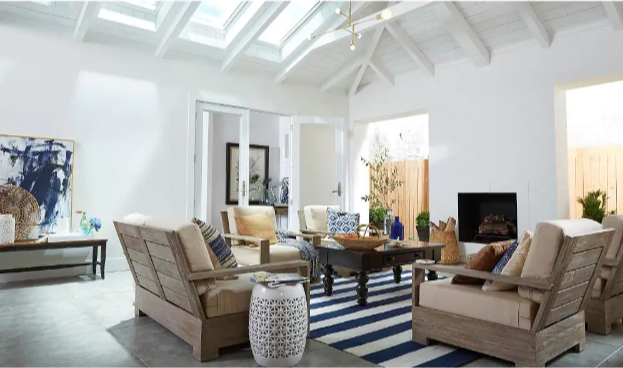
Types of Skylights
There are three primary types of skylights: fixed, ventilated, and tubular. Each type is best suited to different applications.
Fixed
Fixed, or inoperable, skylights allow light in but cannot be opened and therefore do not provide additional ventilation. They’re best suited for out-of-reach areas such as high cathedral ceilings. Since fixed skylights let some heat in but provide no ventilation, they are a better choice for those living in colder climates who are looking to increase, rather than decrease, interior temperatures. Fixed skylights can provide views of the home’s surroundings and make a space brighter while reducing energy costs.
Ventilated
Ventilated skylights—also known as operable skylights or roof windows—can be opened and closed either manually or electronically to act as a skylight window. They are ideal for spaces requiring additional ventilation, such as kitchens and bathrooms. Though motorized skylights are more expensive than fixed ones, they offer the advantage of allowing users to open and close the skylight, often with the push of a button. Some ventilated skylights feature moisture sensors and close automatically if it begins to rain, ensuring a home’s furnishings aren’t damaged in the event that the skylight is open while no one is home.
Tubular
Tubular skylights are a great way to add natural light to a small space. They feature an adjustable reflective tunnel, allowing for flexible installation. They are often placed in areas such as hallways, closets, and stairwells that receive limited natural light. Tubular skylights are simple and inexpensive to install and can provide a significant amount of light despite their small size. In fact, they let in the equivalent of a 1,200-watt incandescent bulb in June and a 700-watt bulb in December.
Although they let in additional light, tubular types won’t have a major effect on the temperature of a room or the space’s energy bills. Most models feature ultraviolet (UV) inhibitors on their rooftop domes.
What to Consider When Choosing the Best Skylight
Although it’s easy to assume that all types of skylights offer similar performance, several factors affect their functionality. Keep reading to learn about the important features to consider when choosing skylights for the home.
Glazing
The panes of a skylight are typically referred to as glazing. Skylight glazing can be made out of glass or plastic, and the type of glazing affects overall window replacement cost.
- Glass glazing is durable and aesthetically appealing but costs much more initially than plastic glazing. Tempered-glass skylights are even more durable than standard-glass skylights and are an excellent choice for those living in regions that experience heavy snowfall.
- Plastic glazing can be made from acrylic or polycarbonate. Plastic is substantially more affordable than glass, but it can yellow over time. It also allows a higher quantity of UV rays to penetrate the material unless it’s protected with a UV-resistant coating. Skylights with plastic glazing also are more likely to leak over time.
Some skylights have double or triple glazing to provide additional insulation.
Frame
A skylight’s glazing is usually the primary consideration, but shoppers also should look at the materials used for its frame. Frames can be made from a variety of materials, including wood, vinyl, and metal. Sometimes, several materials are combined to construct the frame.
Skylight frames are typically either curb mounted or deck mounted. A curb mount creates a curb on which the actual skylight sits and is necessary for roofs with slopes of less than 14 degrees. Deck-mounted frames, on the other hand, are best suited for roofs with slopes that are angled at more than 14 degrees. In this design, the skylight sits closer to the roof itself and has no curb.
Skylights are often rated with a U-value (or U-factor) that measures the heat flow they allow. The lower the U-value, the better the heat-flow resistance. Typically, a skylight with a U-value of less than 0.6 is best.
Shape
Skylights generally have a flat, domed, arched, or pyramid shape. The shape of the glazing primarily affects how the skylight looks on a home’s exterior but also affects how light gets in.
The shape of a skylight’s shaft is also a major consideration because it will affect how the natural light enters the room. Skylight shafts can be either straight, angled, or flared.
Straight skylight shafts direct light straight down into the space.
Angled skylight shafts are flared on two sides and direct light in the direction of the two flared sides.
Flared skylight shafts are flared on all four sides and disperse light most broadly, spreading it furthest into the room.
Additional Features
Although all skylights serve the same basic purpose, some have useful additional features.
- Energy Star–certified skylights are designed to reduce energy costs as much as possible by providing excellent insulation.
- Protective UV-reducing coatings minimize damage caused by the sun’s UV rays.
- Heat-absorbing tints are ideal in hot climates.
- Low-emissivity coating keeps heat indoors in colder weather.
- Heavy-duty materials go into the design of some skylights so they can withstand significant snowfall.
- A built-in shade is useful on some skylights, such as those installed in bedrooms, to block out the early morning light.
- A screen is a handy feature for ventilated skylights to keep out insects or debris.
Our Top Picks
With all that we’ve just learned about skylights, it’s time to start shopping. The following are the top picks for the best skylights for your home.
Best Overall
Velux Fixed Curb-Mounted Skylight
See ItPros
- Available in a wide range of sizes
- Made with double-paned glass
- Features an energy-efficient design
- Includes 10-year warranty for leaks and hail
Cons
- Curb not included
Product Specs
- Type: Fixed
- U-value: 0.48
- Glazing material: Glass
This fixed skylight from Velux is made with double-paned argon-gas–filled low-E3 glass, which results in a U-value of 0.48. It has a curb-mounted frame, which is ideal for either flat or low-slope roofs, though this model can be installed on roofs with pitches of up to 60 degrees. This model requires a site-built curb, which is not included with the purchase because it is intended as a replacement for an existing curb-mounted skylight.
Though this particular model measures 46.5 inches long by 22.5 inches wide, it comes in a large variety of additional sizes. Velux supplies a 10-year warranty against leakage when the skylight is installed with the proper flashing kit and a 10-year warranty against glass breakage due to hail.
Get the Velux curb-mounted skylight at The Home Depot or Lowe’s.
Best Bang for the Buck
Sun-Tek Fixed Self-Flashing Polycarbonate Skylight
See ItPros
- Available in a wide range of sizes
- Made with maximum impact resistance
- Easy to install
Cons
- High U-value
Product Specs
- Type: Fixed
- U-value: 1.05
- Glazing material: Polycarbonate
This fixed skylight from Sun-Tek features a tinted, domed design and maximum impact resistance, making it a great choice for those living in hurricane-prone areas. It’s designed with a unique self-flashing mount, which is installed directly between the shingles and roof decking. Because it’s made from a single piece of material, it’s easy to install. This model is suitable for either asphalt shingle or composition roofs but not for metal roofs.
It’s important to note that this model has plastic cladding, which contributes to a higher U-value than the other products we recommend. That makes this model a good choice for shoppers who are less concerned about heat transference.
Get the Sun-Tek skylight at The Home Depot.
Best Deck Mount
Velux Fixed Deck-Mounted Skylight
See ItPros
- Available in a wide range of sizes
- Made with double-paned glass
- Features laminated, coated glass
- Includes 10-year warranty for leaks and hail
Cons
- Flashing sold separately
Product Specs
- Type: Fixed
- U-value: 0.44
- Glazing material: Glass
A deck-mounted skylight is necessary for steeply sloped roofs with angles of 60 degrees or more. This fixed model from Velux is suitable for roofs with slopes of between 14 degrees and 85 degrees. The glazing is constructed with double-paned argon-gas–filled low-E3 glass that results in a U-value of 0.44. The brand’s Neat-glass coating keeps the glazing looking clean for longer.
Like all Velux skylights, this model comes with a 10-year warranty that protects against hail and leaks if installed using one of the brand’s flashing kits. It’s available in a wide variety of sizes, so there should be an option to suit most shoppers’ needs.
Get the Velux deck-mounted skylight at The Home Depot or Lowe’s.
Best Ventilated
Velux Solar-Powered Fresh Air Curb-Mounted Skylight
See ItPros
- Available in a range of sizes
- Made with double-paned glass
- Features an energy-efficient design with solar power
- Includes 10-year warranty for leaks and hail
Cons
- Curb not included
Product Specs
- Type: Ventilated
- U-value: 0.53
- Glazing material: Glass
Ventilated skylights allow users to open and close the panes to let in fresh air. This top-of-the-line model from Velux uses the power of natural daylight to recharge a highly efficient battery-powered control system. It includes a remote control as well as an insect screen, which is a nice bonus for ventilated models.
This is a curb-mounted model and requires a site-built curb, which is not included. The frame is made from aluminum and provides a U-value of 0.53. This skylight measures 46.5 inches long by 22.5 inches wide but also comes in several other sizes. Velux offers a 10-year warranty for leaks and hail, which is dependent on correct installation.
Get the Velux solar-powered skylight at The Home Depot or Lowe’s.
Best Tubular
Natural Light Energy Systems 10" Tubular Skylight
See ItPros
- Includes condensation-release system
- Diffuser includes built-in UV protection
- Energy Star–qualified
- Offers 25-year warranty
Cons
- High price for the size
Product Specs
- Type: Tubular
- U-value: N/A
- Glazing material: N/A
This 10-inch-wide tubular skylight from Natural Light Energy Systems is designed for pitched, shingled roofs. The diffuser features built-in UV protection as well as a condensation-release system to prevent moisture buildup.
Although the exact light output depends on the weather, the manufacturer estimates that this skylight provides a 150-square-foot light output equivalent to up to 300 watts.
This skylight is suitable for homes in hurricane zones and meets Florida skylight code requirements. To install it on a tile roof, a special flashing kit must be purchased separately.
Get the Natural Light Energy Systems tubular skylight on Amazon.
Our Verdict
After reviewing this guide, buyers now know more about shopping for a skylight for the home. We recommend the Velux curb-mounted skylight for its eco-friendly design and relatively affordable price. Those on a budget might appreciate the Sun-Tek skylight, which offers similar performance at a lower price point.
How We Chose the Best Skylights
Years of experience covering home products and hardware supplies as well as extensive product research went into creating this guide. We explored more than 40 skylight options and weighed several practical considerations before making our recommendations.
- Type: In an effort to provide a suitable range of options for different shoppers, we aimed to include skylights of varying types in this guide.
- Warranty: Skylights should last about a decade, so we prioritized brands that offer warranties lasting at least 10 years.
- Value: Skylights range in price depending on their size, type, and the materials from which they’re constructed. We ensured that all the skylights we recommend offer excellent value regardless of price.
Skylight Installation Tips
For the best results, consider these tips for properly installing a skylight.
- Choose the right size: Plan for 1 square foot of skylight for every 20 feet of floor space in the room.
- Ensure the joints of the skylights are sealed tightly to prevent moisture from getting in.
- Choose a skylight with interior channels to reduce the accumulation of condensation.
- Closely follow the manufacturer’s installation instructions for the best results.
- Consider hiring a professional—an improperly installed skylight can lead to leaks and drafts.
FAQs
Though you now know more about skylights, you may still have questions about choosing and installing them. Here are answers to some of the most frequently asked questions about skylights.
Skylights themselves vary widely in price, ranging from $100 to thousands of dollars, depending on their size and type. Expect to pay between $100 and $1,500 for a high-quality skylight. Hiring a professional to install a skylight costs an average of $1,750.
Installing a skylight is a difficult job that’s best suited to experienced DIYers and professionals.
To measure an existing skylight for an appropriate replacement, measure both the interior and exterior of the current skylight, as suggested in this Velux blog post. “Measure along the side of the skylight where the shingles meet the flashing, width first then length. Next, measure the height of your skylight or curb,” the author writes. For the interior measurements, measure the “width and length of the drywall around the skylight’s opening.”
The longevity of a skylight is based on both the quality of the skylight’s materials and how well it is installed. Expect most skylights to last between 8 and 15 years.


